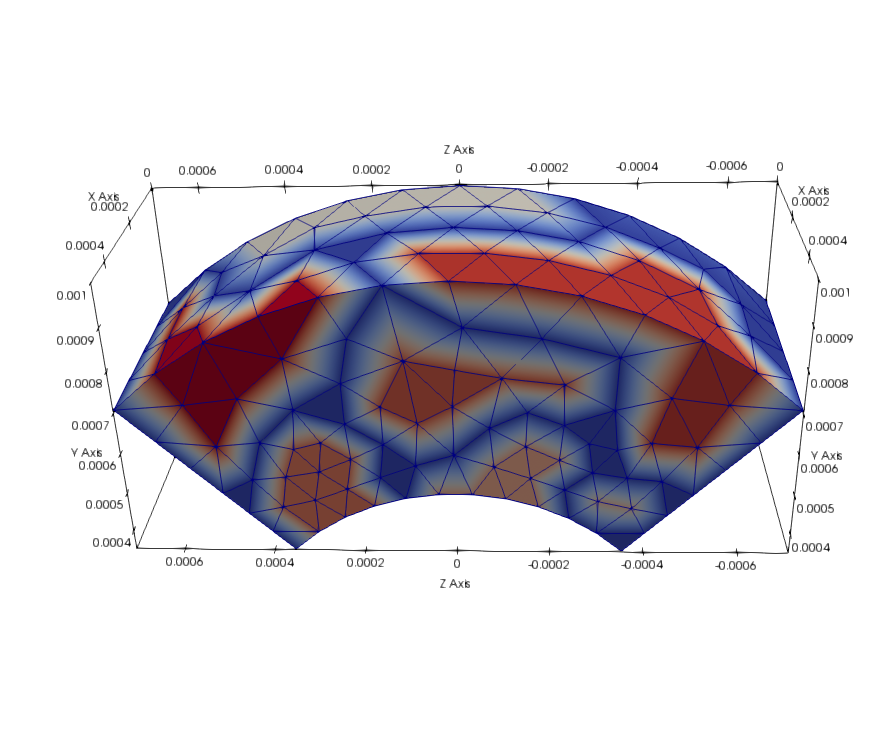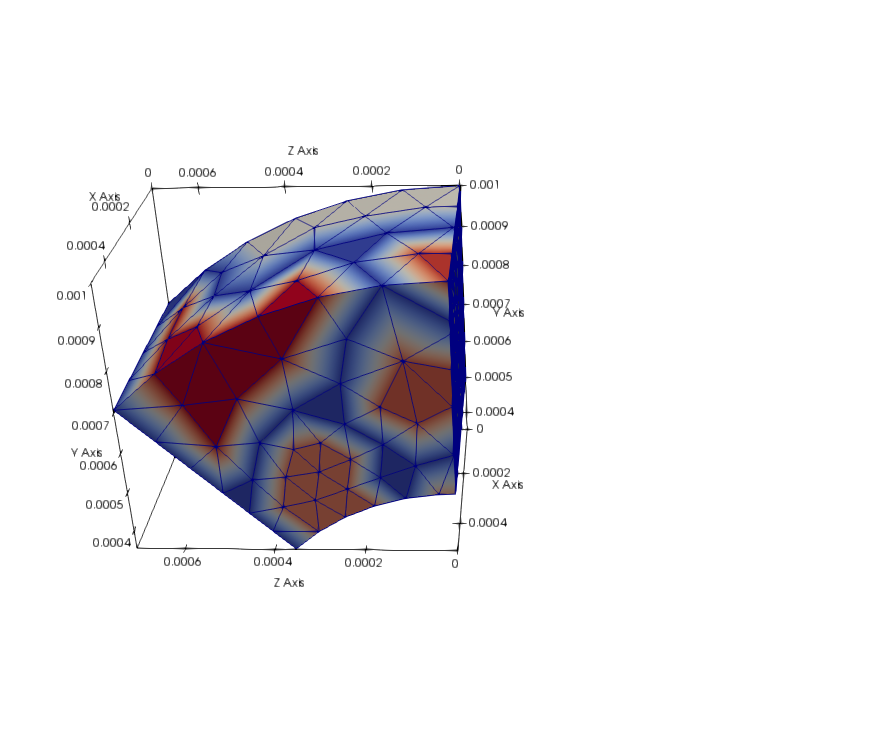Clip¶
Description¶
Clip a grid (structured of unstructured) using a given clipping geometrical shape.
Initial unstructured multi-element mesh on the left. Clipping with a plane on the right.
Parameters¶
- base:
Base The input base to be clipped.
- base:
- coordinates: list(str)
The variable names that define the set of coordinates.
- type: str, default= ‘plane’
The type of geometrical shape used to clip. The values are: - plane - cone - cylinder - sphere - revolution
If none of the above, you can also set a VTK functions as a value.
- origin: tuple(float),
The coordinates (tuple of 3 floats) of the origin used to define the clipping shape. Used for: - plane - cone - cylinder - sphere
- normal: tuple(float),
The coordinates (tuple of 3 floats) of the normal vector used to define a clipping plane.
- angle: float,
Angle (in radian) of the clipping cone.
- radius: float,
Radius of a clipping cylinder or sphere.
- line: dict,
Definition of the line for the clipping of type ‘revolution’.
As an example, in a cylindrical coordinate system (x,r,t). Give the axial points as keys and radial points as values. The revolution will take place in the azimutal direction. The lowest and the greatest x-values will serve to set two x-constant clipping planes to only keep the domain in-between.
- axis: tuple(float),
The coordinates (tuple of 3 floats) of the axis vector used to define a clipping cone or cylinder.
- invert: bool, default= False
If True, invert the clipping domain.
- memory_mode: bool, default= False
If True, the initial base is deleted on the fly to limit memory usage.
- with_families: bool, default= False
If True, the output of the treatment contains rebuilt families based on the input base. All the families and all the levels of sub-families are rebuilt, but only attributes and Zone are transfered (not yet implemented for Boundary and Window).
Preconditions¶
Zones may be either structured or unstructured.
Zones may contain multiple instants.
Postconditions¶
The output base is always unstructured. 3D bases only contain tetrahedral elements. 2D bases only contain triangle elements. If with_families is enabled, the output base contains the reconstructed families of base.
Example¶
The following example shows a clipping with a plane defined with the point (0., 0., 0.) and the normal vector (1., 0., 0.).
import antares
myt = antares.Treatment('clip')
myt['base'] = base
myt['type'] = 'plane'
myt['origin'] = [0., 0., 0.]
myt['normal'] = [1., 0., 0.]
clipped = myt.execute()
Note
dependency on VTK
Main functions¶
Example¶
"""
This example shows how to clip a base.
Note that even if the input base is structured, the output of the
clip treatment will be unstructured.
"""
import os
import antares
OUTPUT = 'OUTPUT'
if not os.path.isdir(OUTPUT):
os.makedirs(OUTPUT)
# ------------------
# Reading the files
# ------------------
reader = antares.Reader('bin_tp')
reader['filename'] = os.path.join('..', 'data', 'ROTOR37', 'GENERIC', 'flow_<zone>_<instant>.dat')
ini_base = reader.read()
# -----------------------
# Clipping of type plane
# -----------------------
# For this clipping the dataset is cut by a plane and only the
# cells under the plane are kept (under/over is defined by the
# normal orientation).
# Note that the output dataset present a smooth plane cut at the
# clipping position
treatment = antares.Treatment('clip')
treatment['base'] = ini_base
treatment['type'] = 'plane'
treatment['origin'] = [70., 0., 0.]
treatment['normal'] = [1., 0., 0.]
result = treatment.execute()
# -------------------
# Writing the result
# -------------------
writer = antares.Writer('bin_tp')
writer['filename'] = os.path.join(OUTPUT, 'ex_clip_plane.plt')
writer['base'] = result
writer.dump()


